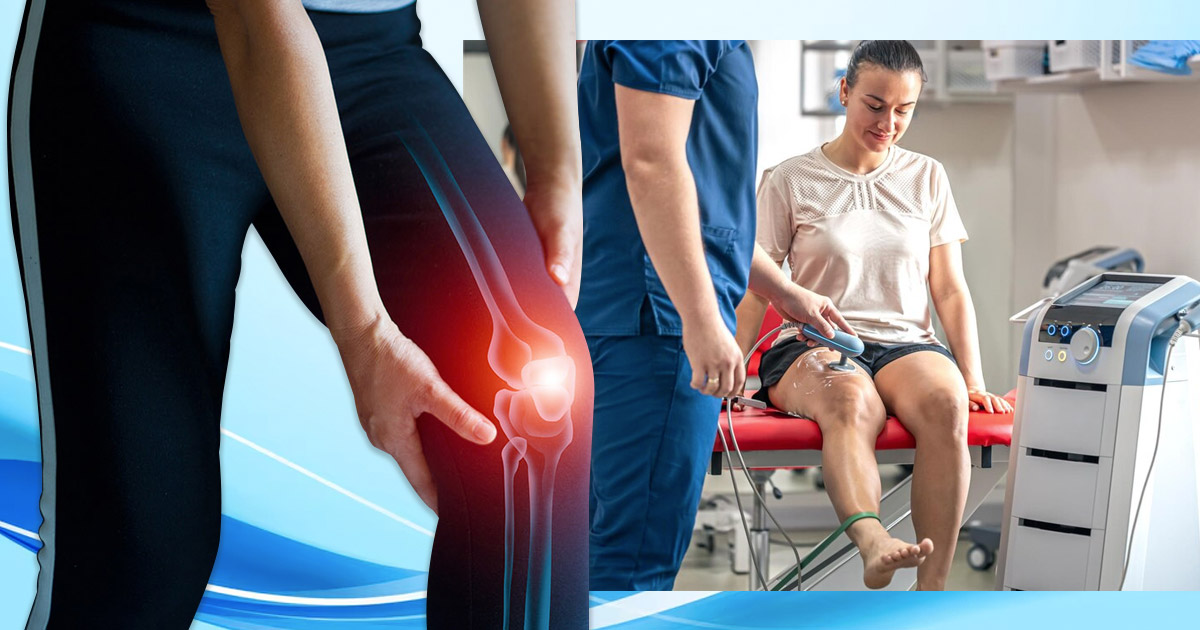Laser Therapy: Pros & Cons for Treating Knee Pain

Millions of people struggle with knee pain, whether from osteoarthritis, past injuries, or long-term joint issues that worsen over time. Traditional treatments like medication, physical therapy, and surgery have long been the standard. However, many are now turning to laser knee therapy as an alternative. This non-invasive treatment is gaining popularity, but does it work? Weighing the pros and cons is important before deciding if this treatment is right for you. While laser therapy promises pain relief and reduced inflammation, results can vary.
How Laser Therapy Works
Laser therapy, known as low-level laser therapy (LLLT) or photobiomodulation therapy (PBMT), uses targeted light wavelengths to reach deep into the skin. Unlike surgical lasers, these low-intensity beams do not cut or burn tissue. Instead, they stimulate cellular activity, increase blood circulation, and promote healing.
The light energy kickstarts chemical reactions in damaged tissues, promoting cell repair and easing inflammation. This process is believed to relieve knee pain caused by osteoarthritis, sports injuries, and chronic conditions like tendinitis or bursitis.
What to Expect During Treatment
A healthcare professional will aim the laser device at the affected knee. It may touch the skin or hover just above it. Each session usually targets the affected area for 30 to 60 seconds, depending on the condition’s severity. Most patients require multiple sessions, ranging from eight to 30 treatments for noticeable relief.
The Good
1. Pain Relief Without Medication
Many patients seek laser treatment for pain and inflammation side effects because they want to avoid painkillers. NSAIDs and opioids can have side effects, while laser therapy provides a drug-free option that may offer safer pain relief.
2. Reduces Inflammation and Promotes Healing
Inflammation contributes to knee pain and stiffness, especially in osteoarthritis. Laser therapy stimulates blood flow and reduces inflammatory markers, potentially improving knee function. Studies show that LLLT can relieve mild to moderate osteoarthritis pain while enhancing joint flexibility.
3. Non-Invasive and No Downtime
Unlike surgery, laser knee therapy does not require incisions, anesthesia, or recovery time. Patients can resume daily activities right away, making it a convenient choice for those looking to avoid invasive treatments.
4. Complements Other Treatments
Laser therapy works well with physical therapy, exercise, and rehabilitation programs. Studies suggest that combining laser treatment with rehabilitation exercises may lead to greater improvements in pain relief and mobility.
5. Minimal Side Effects
One of the biggest advantages is the lack of severe reactions. Unlike medications or injections, side effects of laser treatment for knee pain are rare. Some patients experience mild skin irritation or temporary discomfort, but these effects usually fade quickly.
The Bad
1. Results May Vary
Laser therapy is not a guaranteed cure for knee pain. While some patients report significant relief, others experience minimal improvement. Effectiveness depends on factors like pain severity, treatment consistency, and the exact laser technology used.
2. Requires Multiple Sessions
Pain relief does not happen overnight. Most patients need several sessions over weeks or months before noticing benefits. The time commitment can be challenging for those seeking quick results.
3. Cost Can Be High
One major drawback is the expense. Each session can cost between $50 and $200, depending on the provider. Since insurance often does not cover laser therapy, out-of-pocket costs may add up. Patients needing up to 30 sessions could face significant financial strain.
4. Requires Skilled Administration
For laser therapy to work, the light dose, intensity, and position must be precisely controlled. If applied incorrectly, the treatment may have little to no effect. This makes it important to seek an experienced provider.
5. Not Suitable for Everyone
Certain individuals should avoid laser therapy. People with epilepsy may experience seizures from pulsed light exposure. Those with cancerous tumors in the knee area should also steer clear, as the effects of laser therapy on cancer cells remain uncertain. Pregnant women should consult a doctor before considering treatment.
6. Over-the-Counter Devices May Not Work
Many companies sell at-home laser devices, but these products often lack the power of professional treatments. Without proper training, users may not apply the laser correctly, leading to poor results or no relief at all.
Laser Therapy is A good Option for Knee Pain, But…
Laser therapy is a promising treatment for knee pain, especially for osteoarthritis and long-term joint issues. Studies show it can reduce pain, improve movement, and help the body heal naturally. Since it’s non-invasive and has few side effects, many people see it as a safer option compared to medications or surgery.
However, laser therapy isn’t a guaranteed fix for everyone. Its success depends on the person, the severity of the knee problem, and how well the treatment is applied. There’s also no universal method, which means results can vary. Plus, the cost can be high, and insurance may not cover it.
